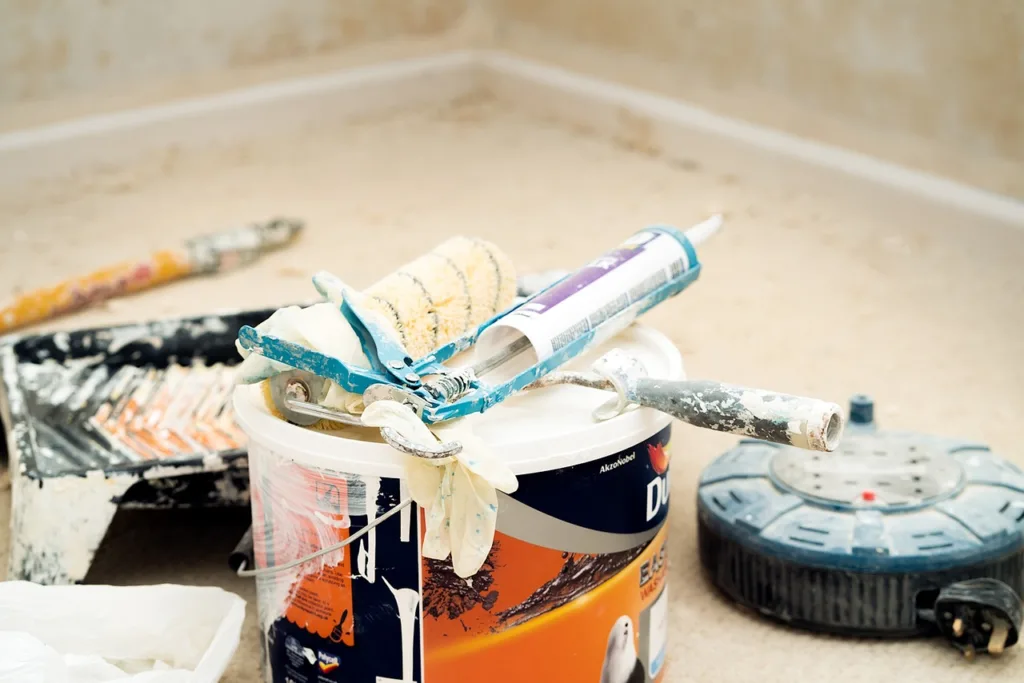Stainable caulk is a versatile and useful product for many home improvement and maintenance projects. Whether you are sealing gaps and cracks around windows and doors, repairing baseboards, or filling in gaps in woodwork, stainable caulk can help you achieve a professional-looking finish.
One of the advantages of stainable caulk is that it can be used on a variety of surfaces, including wood, metal, and masonry. This makes it a great choice for projects where you need to fill gaps and cracks in different types of materials. It also means that you can use stainable caulk to create a seamless finish btween different materials.
Stainable caulk is typically made from a combination of acrylic or latex and silicone. This gives it the flexibility and durability of silicone, while also allowing it to be painted or stained like acrylic or latex. The result is a product that can be used in a wide range of applications, from interior trim work to exterior siding.
When using stainable caulk, it is important to choose the right type for your project. Some stainable caulks are designed specifically for use on wood, while others are suitable for use on a variety of surfaces. It is also important to choose a caulk that is compatible with the type of stain or paint you plan to use.
Before applying stainable caulk, it is important to properly prepare the surface. This may involve cleaning the area to remove dirt and debris, sanding the surface to create a rough texture for the caulk to adhere to, or using a primer to improve adhesion. Once the surface is properly prepared, you can apply the caulk using a caulking gun or other applicator.
After applying stainable caulk, it is important to allow it to dry completely before painting or staining. This typically takes several hours, depending on the temperature and humidity. Once the caulk is dry, you can paint or stain it to match the surrounding surface.
Stainable caulk is a versatile and useful product for many home improvement and maintenance projects. It can be used on a variety of surfaces and is compatible with both paint and stain. By choosing the right type of stainable caulk and properly preparing the surface, you can achieve a professional-looking finish that will last for years to come.
Should I Caulk Before Staining?
Caulking should be done before staining. This is because caulking helps to seal any gaps or cracks in the wood, preventing moisture from entering and causing damage. Additionally, caulking helps to create a smooth and even surface for staining, ensuring that the stain adheres properly and looks uniform. It is important to note that the caulk should be allowed to dry completely before staining, which typically takes at last an hour. Applying stain over wet caulk can result in uneven coloring and may cause the caulk to deteriorate over time. caulking before staining is an important step in ensuring a high-quality and long-lasting finish.

Can Clear Caulk Be Stained?
Clear caulk can be stained. This is because clear caulk is usually made of a silicone or acrylic material that is compatible with most types of stains. However, it is important to note that not all clear caulk is stainable, so it is important to check the label or consult with the manufacturer before attempting to stain it. Additionally, it is recommended to test the stain on a small, inconspicuous area first to ensure that it will produce the desired result.
Is There A Caulk That Does Not Turn Yellow?
There is a caulk that does not turn yellow. It is called BT1 and it is a universal adhesive created specifically for bathroom sealant applications. Unlike most other bathroom sealants, BT1 is designed to never turn yellow over time. This means that it will maintain its original color and appearance, even after years of use and exposure to water, moisture, and other environmental factors. Some of the key features of BT1 include its strong adhesion, flexibility, and resistance to mildew and mold. Additionally, it can be used on a wide range of surfaces, including porcelain, ceramic, glass, and metal. If you are lookig for a caulk that will maintain its color and appearance over time, BT1 may be a great option to consider.
What Kind Of Caulk Do You Use On A Log Home?
When it coes to caulking a log home, there are two main types of caulk that are commonly used – acrylic and urethane-based. Acrylic caulk is a water-based product that is easy to apply and clean up, making it a popular choice for DIYers. It also dries quickly and can be painted over once it has cured. Urethane-based caulk, on the other hand, is a more durable and long-lasting option that is often used by professionals. It is resistant to moisture, UV rays, and temperature extremes, making it ideal for use in harsh outdoor environments. Other types of caulk that may be used in general construction include butyl, oil-base, and silicone, but these are less common in log home construction. Ultimately, the type of caulk you choose will depend on your specific needs and preferences, as well as the climate and conditions in which your log home is located.
Conclusion
Stainable caulk is a versatile and essential tool for any painting or home maintenance project. It allows for a seamless blend between the caulked area and the surrounding surface, creating a professional and polished finish. When choosing a stainable caulk, it is important to consider the type of surface it will be applied to and its adhesive bonding strength. Additionally, it is crucial to allow ample drying time before applying any paint or stain. stainable caulk is a valuable investment for any homeowner or DIY enthusiast looking to achieve a flawless and long-lasting result.
